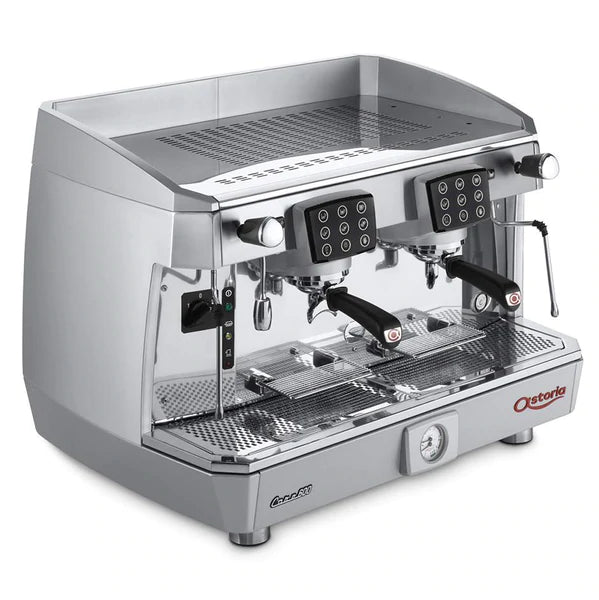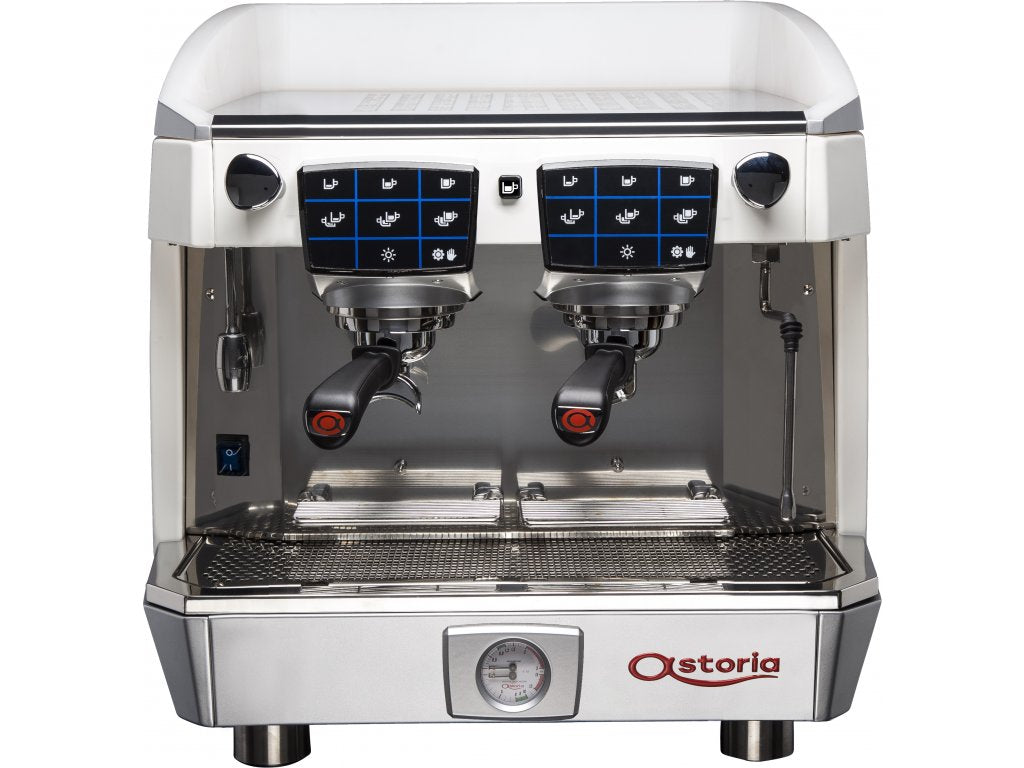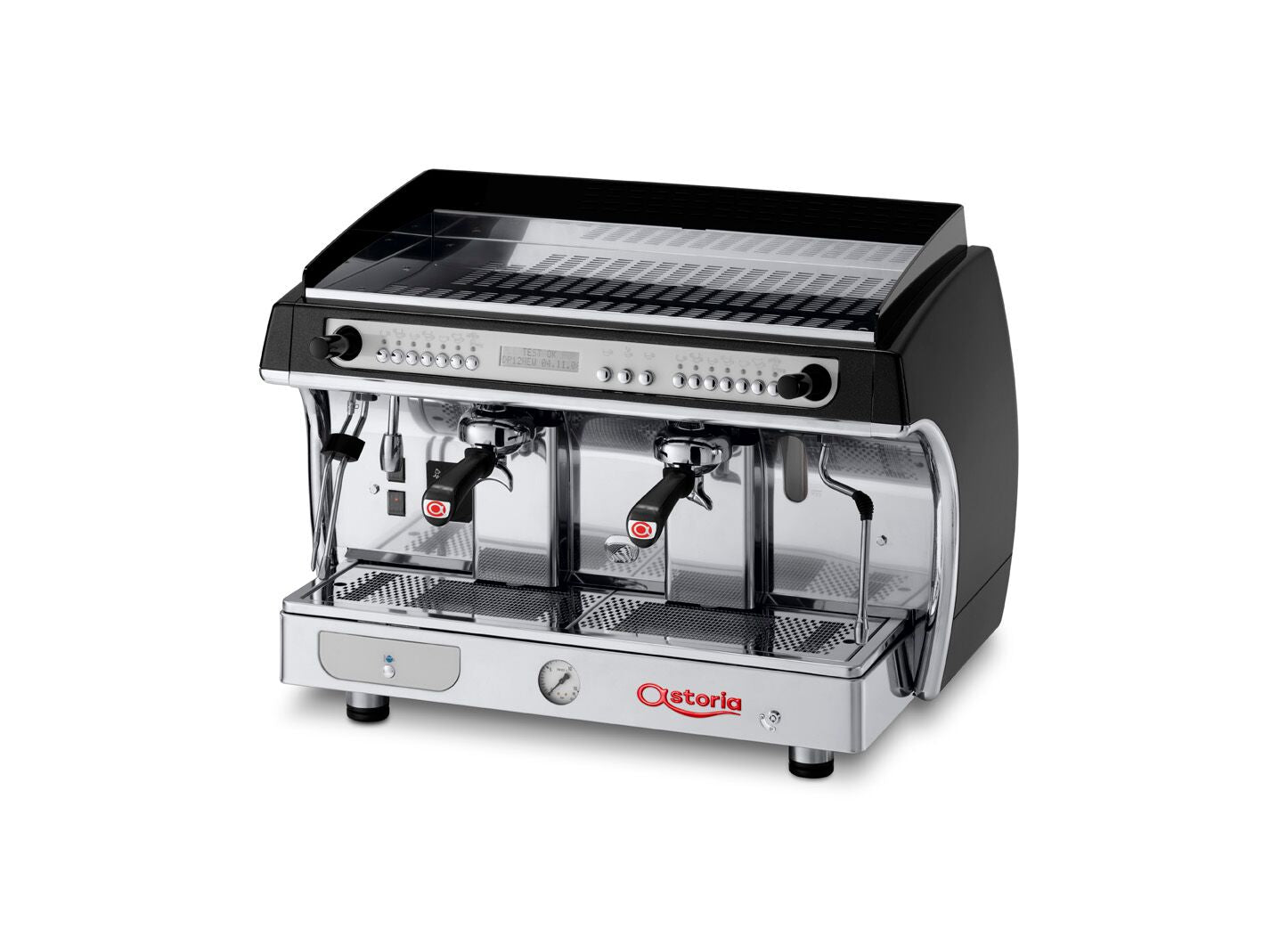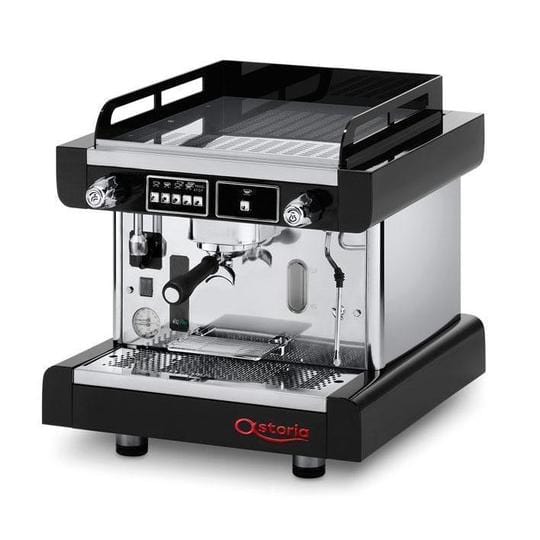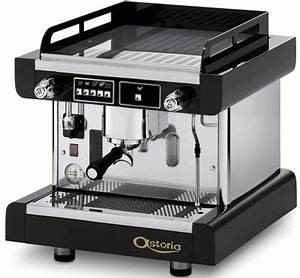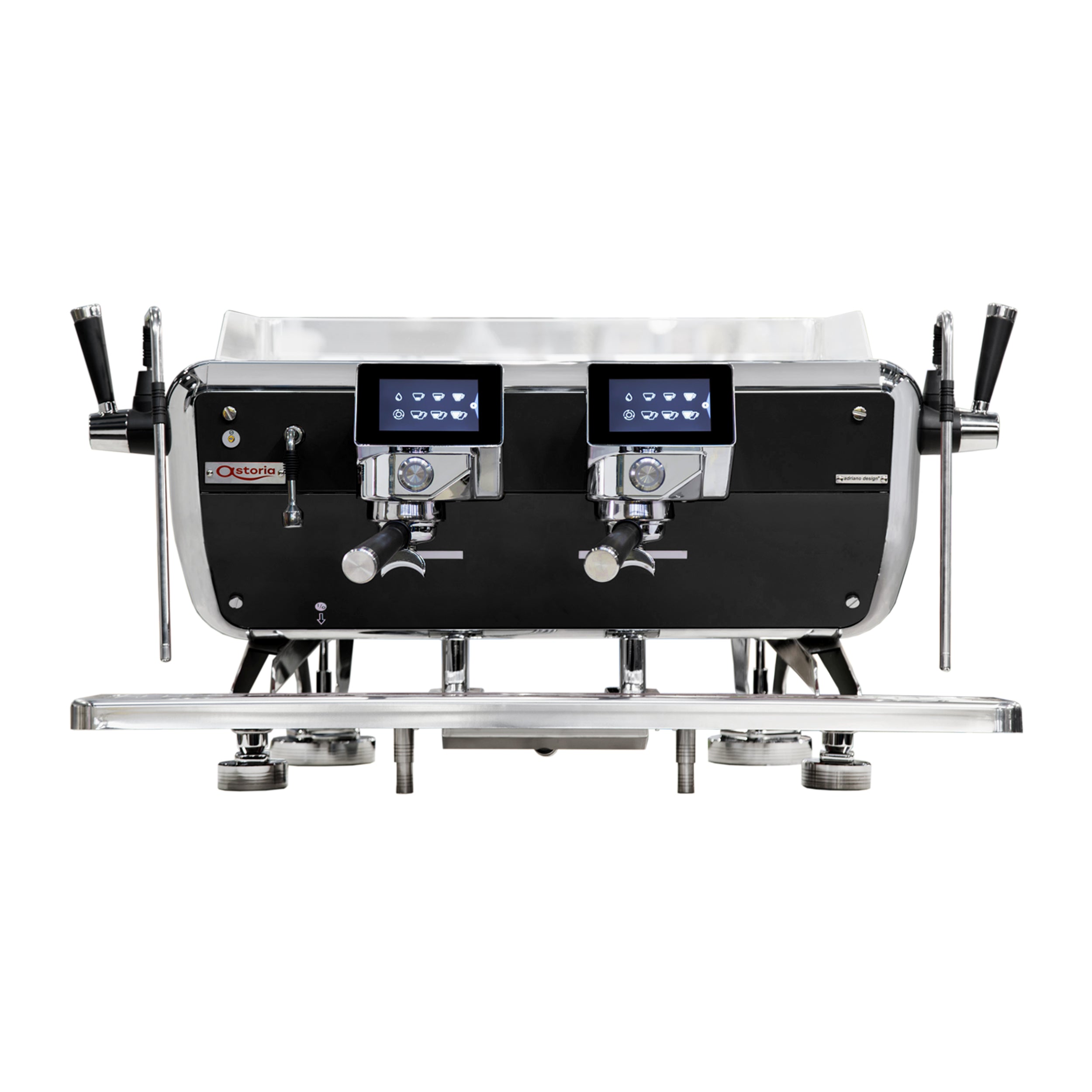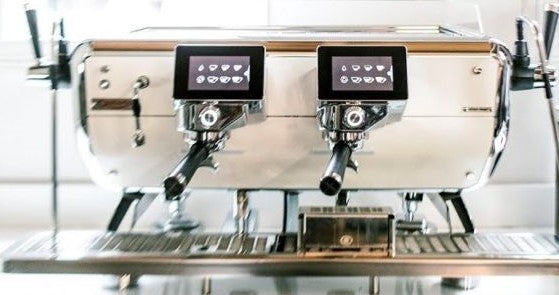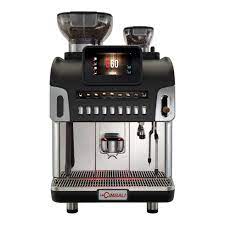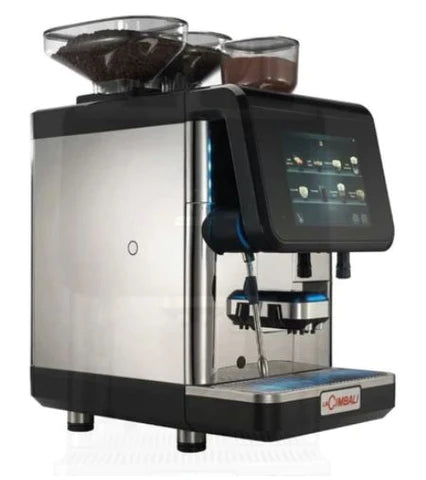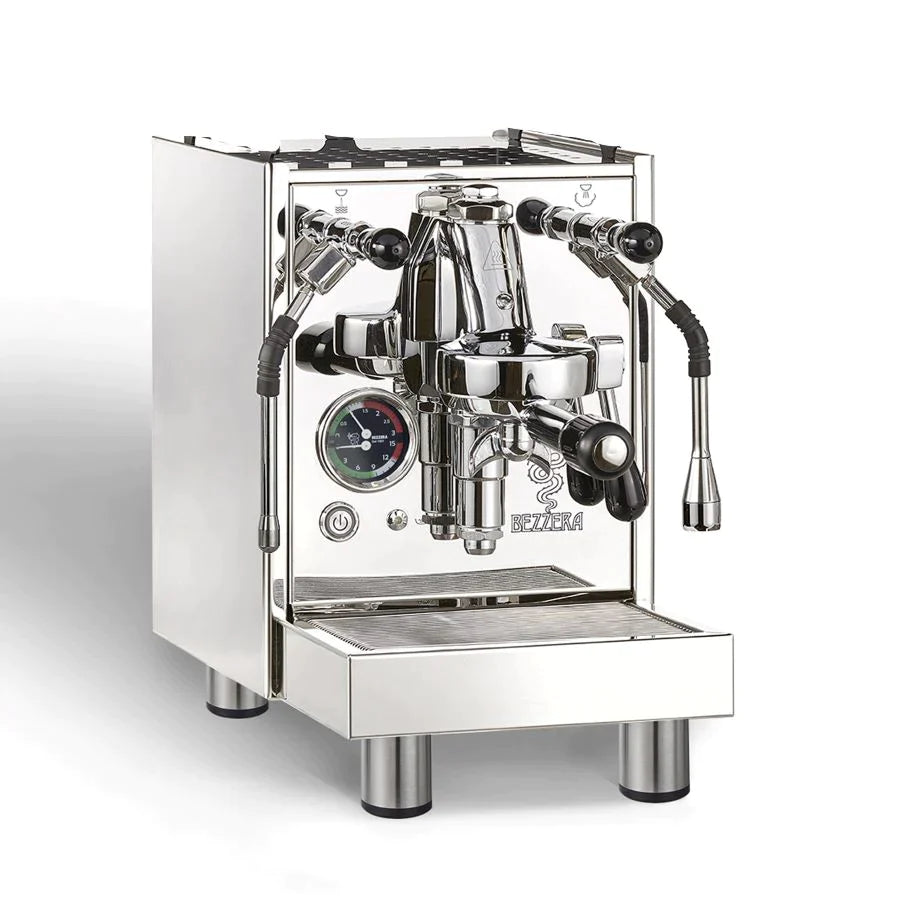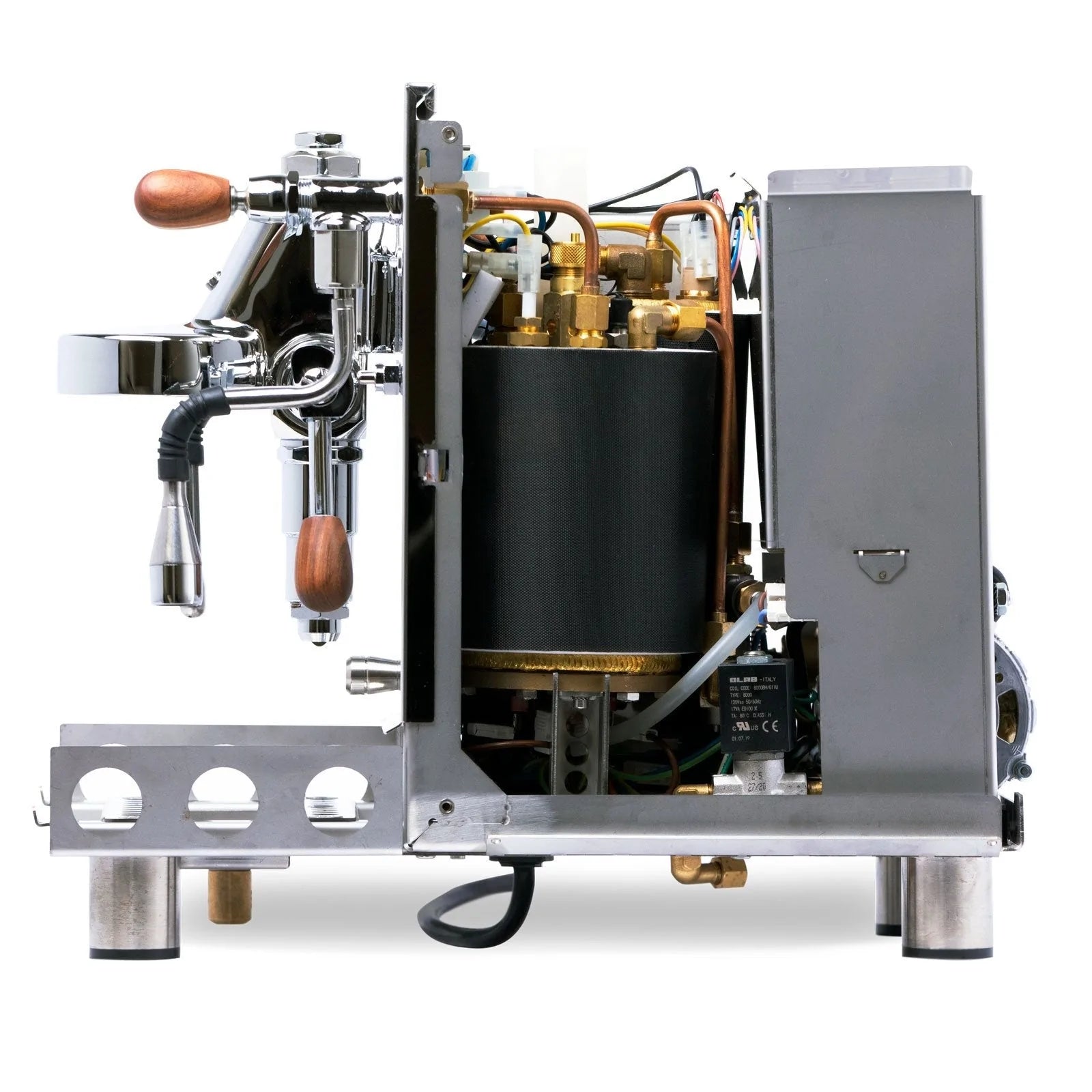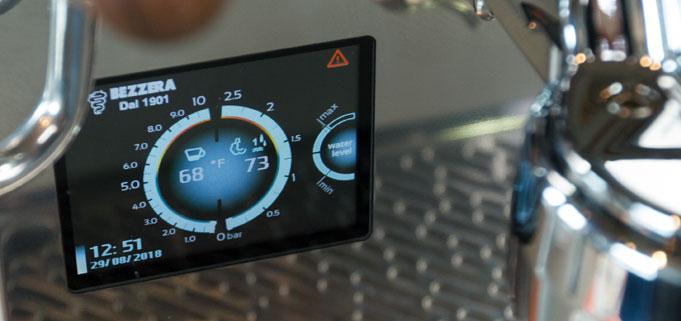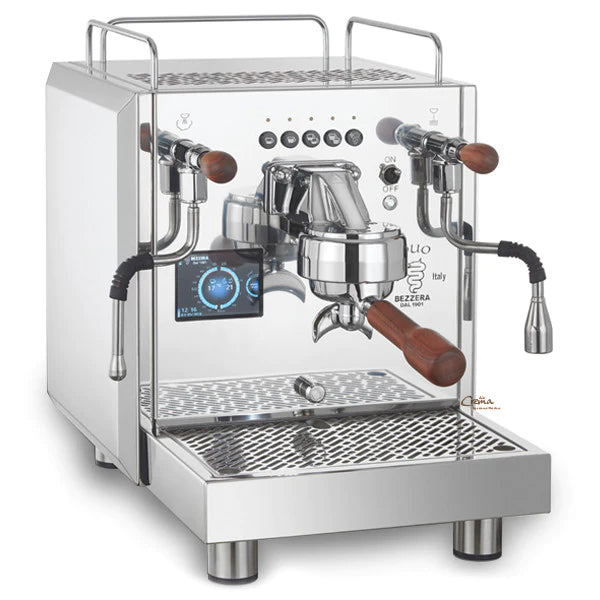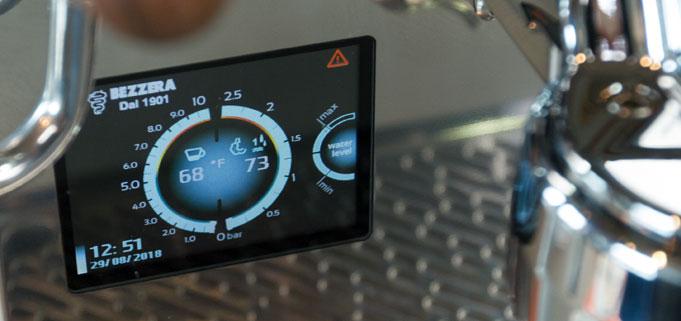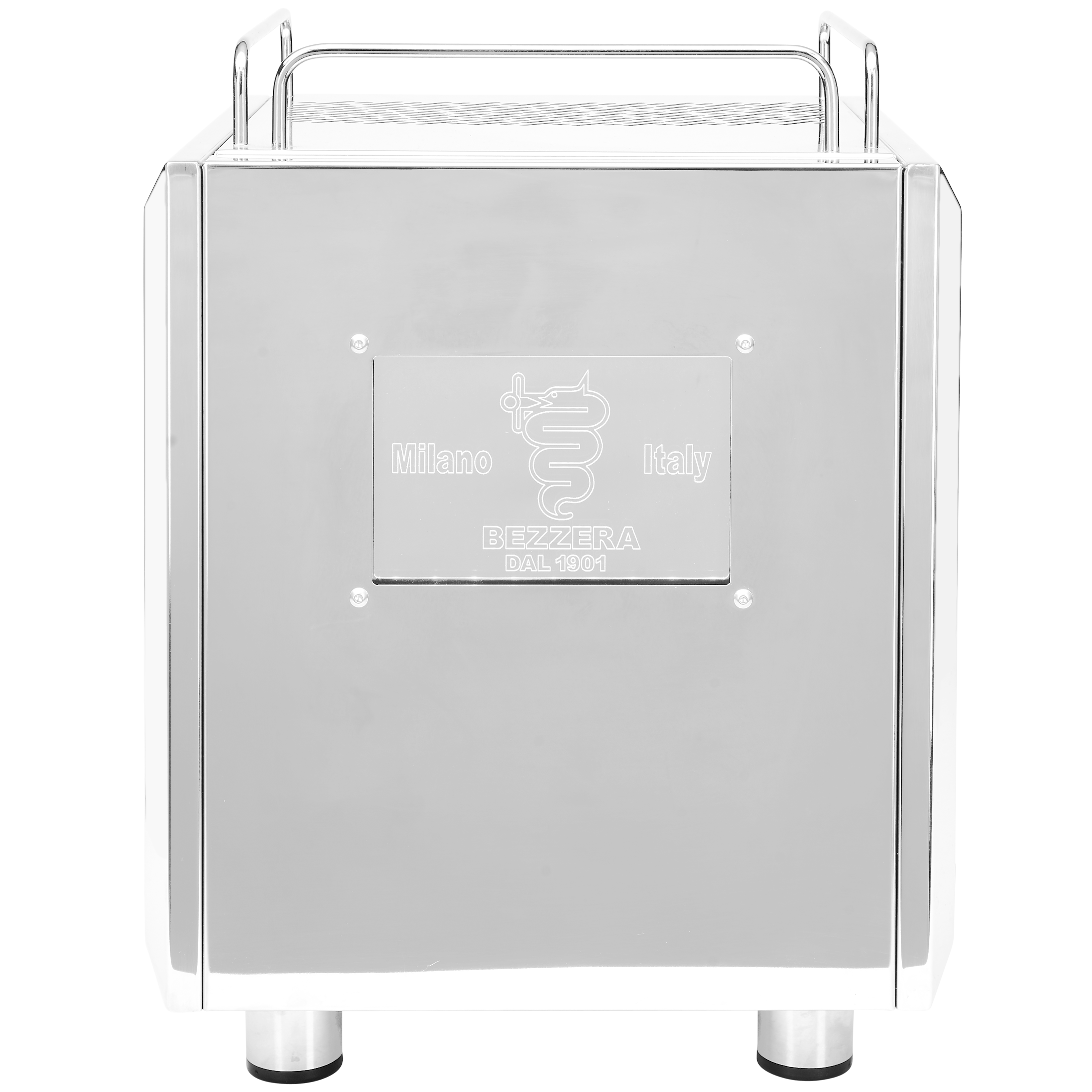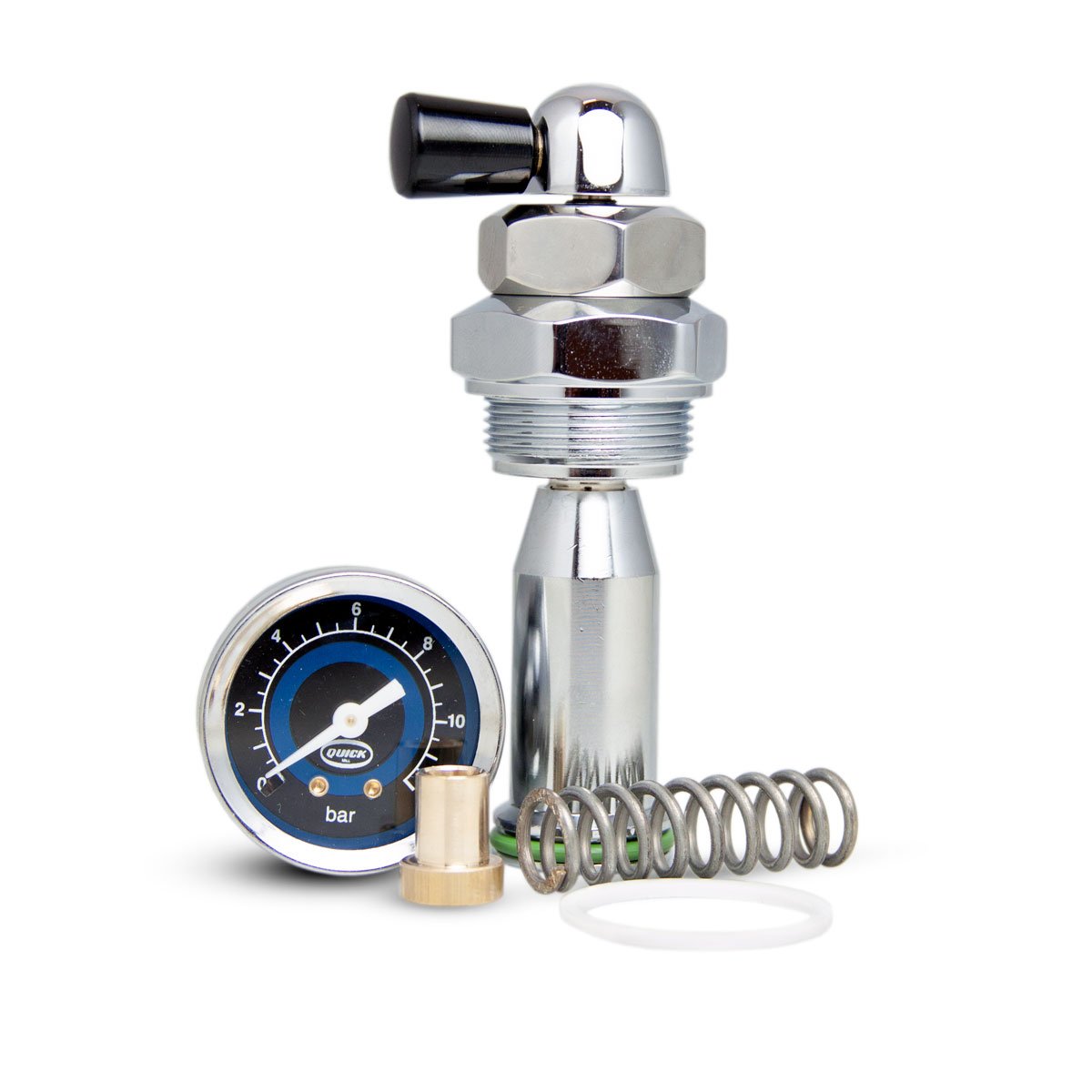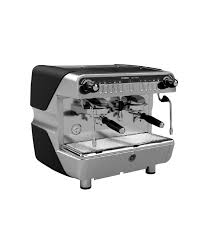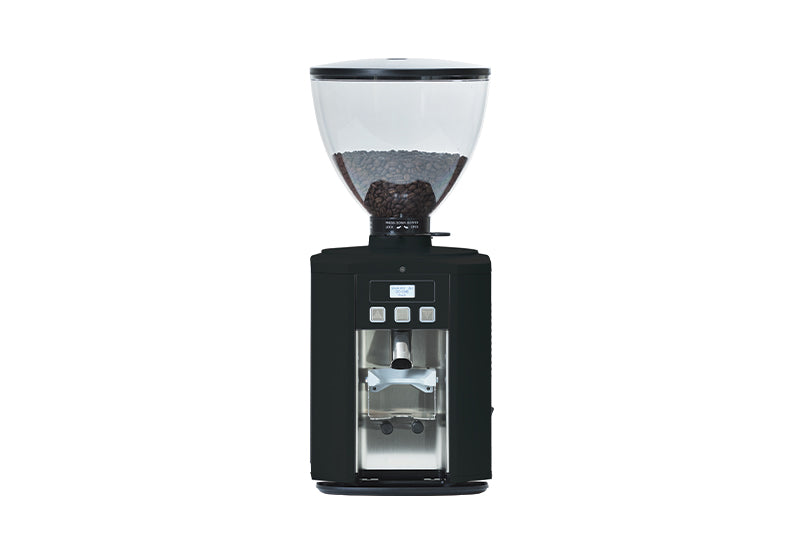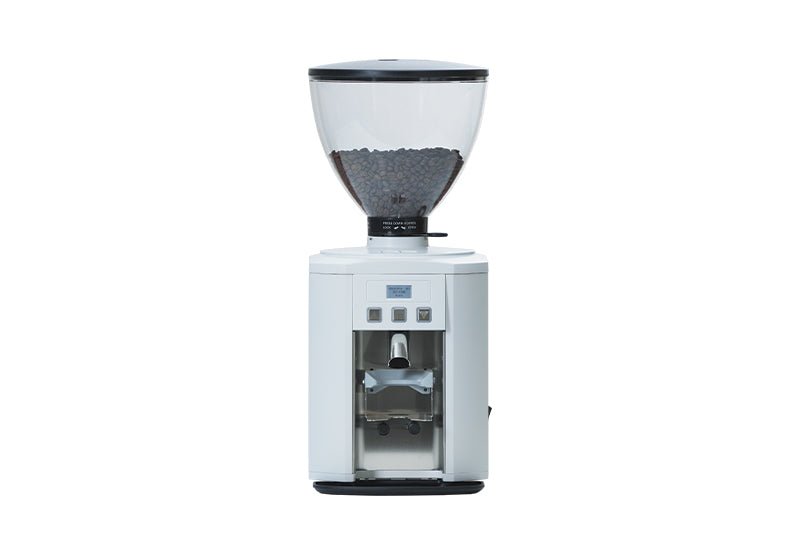Espresso Machines
We offer a full-line of commercial and home brands of espresso machines, from the elegant, innovative independent boiler or heat exchanger models to the basic traditional machines, to the latest feature-rich user-friendly super-automatics.
Between our machine offerings and expertise, we can help you fill the needs of any market segment in the food service industry from coffee houses, restaurants, hotels, convenience stores, kiosks, food service trucks, coffee carts and office use
A Guide to Commercial Espresso Machines
Fewer everyday expectations are higher than the ones customers place on their morning latte, cappuccino, or triple ristretto. Serving these items can be a lucrative venture indeed, but any business that wants to break into the market is well-advised to take these drinks as seriously as their clientele does. Your new commercial coffee maker is likely to be one of the more complex pieces of equipment in your lineup, so choosing a new one can be a little daunting. Once you understand a few basic concepts and add a few new terms to your vocabulary, you’ll be well on the way to pulling the perfect shot.
Many factors go into brewing espresso, starting with coarseness of the grind. Unless pre-ground coffee is used, beans must be ground to the optimal fineness using an appropriate coffee grinder. The grounds must then be poured into the machine’s portafilter, the removable piece with a handle and spout through which the brewed espresso flows. Then it must be tamped to the correct density and fitted to the grouphead, the permanently-attached receptacle through which water flows to the portafilter. The water used to then brew the coffee must be at a specific pressure and temperature. All of those factors play a part in attaining a satisfying, well-balanced shot - one that isn’t too bitter or too sour.
The different categories of espresso machines differ by which of these processes are automated and which are left to the barista. Often, more discerning consumers want to at least see the barista doing some, if not all, of the work manually. That stems in part from a desire to preserve tradition and from the opinion that automating the process produces a lower-quality product.
Three Styles: Semiautomatic, Fully Automatic, & Superautomatic
The first two categories differ in how the flow of water through the portafilter is controlled. Semiautomatic machines leave it up to the barista to determine the volume of water for each shot; they must use a lever or a button to start and stop the flow of pressurized water through the grounds. Fully automatic machines automate that process. The barista needs only to select the size and length of the shot from a menu, and the machine will dispense the selected amount. Nearly all modern espresso machines automatically provide the correct water pressure and temperature, so those aren’t factors that baristas must worry about.
Both semiautomatic and fully automatic varieties leave it up to the barista to grind, fill, and tamp the grounds, a process which has its own unique challenges. Machines that automate that step are called superautomatic machines. They take fresh coffee beans from a detachable hopper, grind them, tamp them into the portafilter, and discard spent grounds into a waste receptacle. The operator has little to do except keep the machine filled with beans, press a button when they want an espresso shot, and empty the grounds container when it gets full. In this case, the only step in a drink preparation that isn’t automated is the frothing of the milk for relevant recipes.
Less-automated machines do give baristas fine-tuned control over the nuanced qualities of espresso drinks, and many connoisseurs argue that a hand-crafted shot is second to none. But practically-speaking, many operators do not have the resources to train each employee to the level it takes to operate a complex machine. That’s why automatic and superautomatic machines are preferred in certain segments when worker turnover is high. They’ll turn out consistently solid drinks shot after shot, with little chance of operator error.
Brew Groups
The next step is to make sure you choose the right size espresso machine based on your business's volume. The most significant sizing metric is the number of brew groups that a machine has. The brew group consists of the grouphead, which is the part of the machine that accepts the portafilter, and the portafilter itself. Most portafilters have two spouts, so you will be able to produce two shots of espresso at one time for each group.
In restaurants where espresso is made back-of-house as a non-essential item, a machine with just one group should suffice. For coffee shops and other establishments that do high volumes of coffee, machines with as many as four groups are available. Multiple brew groups can make it possible for two or more baristas to operate one machine simultaneously. When this will be the case, it is wise to choose a machine that also has two steam wands to help keep drink production flowing.
Other Sizing Considerations
The second most important factor to consider when sizing your machine is its recovery rate. This is the time it takes for the boiler to heat incoming water to the right brewing temperature, usually around 200 degrees Fahrenheit. All machines keep water preheated in the boiler and ready to brew, but if you’re making a lot of drinks back-to-back, and especially if you’re using a lot of steam, that reservoir will become depleted and the water will take some time to reach the right temperature. Water that isn’t hot enough will brew a bitter-tasting shot.
Two factors are at play in sizing a boiler: physical volume and the wattage rating. The volume of the boiler will tell you how much water it can hold at-the-ready; the higher the volume, the more drinks it can produce in a rush. The wattage rating will tell you how powerful the element in the boiler is, which will give you an idea as to how quickly the machine can recover temperatures as water is being used. A higher-wattage element can heat water faster, thus turning out more drinks and steam in a shorter period.
While there is no hard-and-fast rule for sizing an espresso machine to a specific customer volume, it is safe to assume that the least expensive, entry level machines like the Cecilware Venezia II and the Rancilio Epoca will be able to brew a couple dozen drinks an hour, while mid-level machines like the Rancilio Classe 7 can handle 50 to 100 per hour, and the higher-end machines like the Rancilio Classe 10 can handle the full volume of a caffeine-deprived coffeehouse crowd. If you’re on the fence about two different machines, it’s better to have a machine that’s a little bigger than you need than to have one that will struggle to keep up during your busiest hours. Nothing turns off a potential customer like a long line.
Optional Features to Consider
Many espresso machines on the market offer digital controls and other advanced features that make operating and maintaining them a breeze. Here is a rundown of some of the more common features you’ll find.
- Pre-infusion is a process by which water is initially introduced into the grounds at a lower pressure before the coffee is brewed at full pressure. This is said to help achieve a more thorough extraction and a more robust flavor.
- Automatic clean will rinse certain components automatically, taking that burden off the barista and simplifying your daily maintenance routines.
- Calendar settings will automatically power up and preheat the machine before business hours and power off at the end of the day to save energy.
- USB ports come on some models for transferring settings and programs, a useful feature for chains that want to offer consistent products across all locations.
- In response to the boom in popularity of the single-serving coffee pod, some manufacturers now offer models that accommodate disposable pods and capsules
Shipping



























